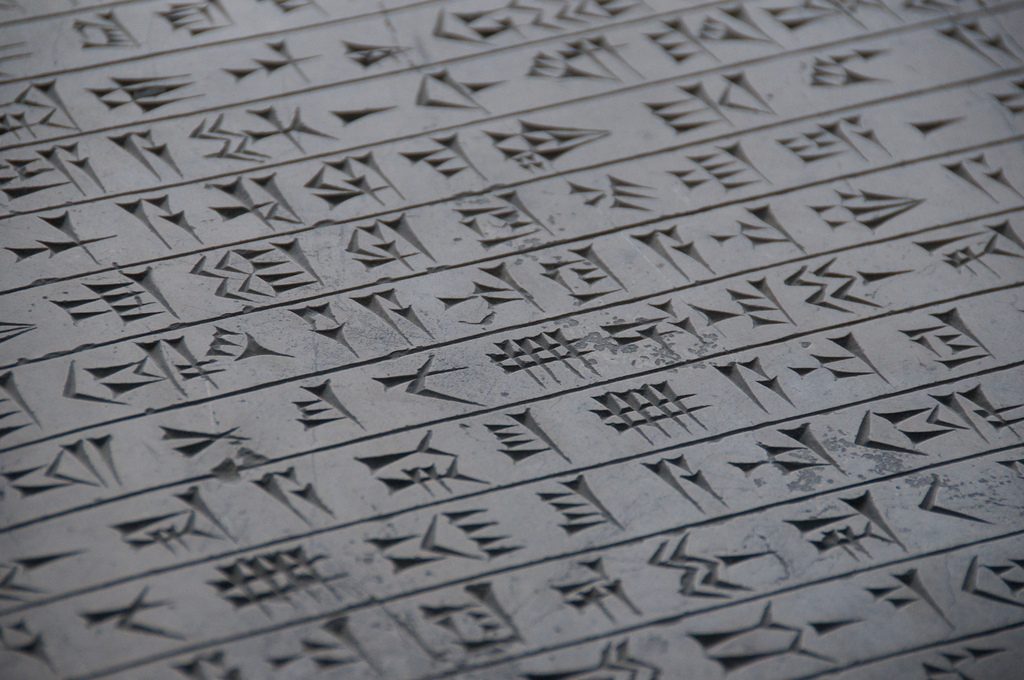When the world began 4.54 billion years ago, it didn’t come with numbers. They didn’t appear with the dinosaurs or first mammals or even the first homo sapiens. That’s because numbers were createdas a way to describe the world. And that is a big-honkin’ deal.
Think about it: Numbers make our daily lives much, much easier — from knowing how much time you have before you must get out of bed to setting the table with the correct number of plates at dinner time. You simply cannot get through your day with encountering numbers — not just once, or twice or a dozen times, butthousands and thousands of times. (Do you see what I did there?)
So if numbers haven’t been with us since the beginning of time, where the heck did they come from? Well, that history is pretty challenging to tell, but this week I’ll give you a little overview, starting with the Sumerians.
Sumer was a region of Mesopotamia, roughly where Iraq is today. The Sumerians made so many discoveries and inventions that the region is often called the Cradle of Civilization. Before this time, people used tallies to count things and geometric figures showed up in art and decoration. But these representations were not really mathematical, and they weren’t used widely and systematically.
It was the rise of cities that really set things in motion. As Sumerians developed commerce, they developed one of the world’s first system of numbers. To keep things fair, people needed a way to keep track of sales and barters. First, they counted on tallies. But there were no numerals associated with the hatch-marks they were using to show the number of sheep in a herd or eggs in a basket.
(Here is a good time to underscore the difference between a number and a numeral. It’s a teeny-tiny distinction, but an important one. A numeral is a character or symbol that describes a number. A number is the actual value of the numeral. So 3 is a numeral. But if I say I have three kittens, well, I’m talking about the number of sweet, little, purring balls of fur curled up on my lap.)
The Sumerians took things a little further with their whole commerce thing — they started systematically subtracting. See, if I had five goats, I’d be given five special tokens. If I sold off one of them, I’d have to give back one of my tokens. To keep track of this natural back-and-forth of trading and selling, merchants began to keep clay tablets of tallies that showed not only the number of baskets or cows or whatever they had at any moment, but a sales history.
And so, arithmetic was born. Oh, and writing. Ta-da! (Those Sumerians were smart and resourceful.)
Now, as this process developed over time, the Sumerians settled on a base 60 system of numbers. We have a base ten system, which in very, very basic terms means two things: we have ten basic numerals that are used to write all other numbers (0-9) and our numbers are described in sets of 10 or multiples of ten.
But not the Sumerians. They liked 60, a number that should be very familiar to us, since it’s the basis of our system of time. That’s probably no accident, right?
Eventually, the Sumerians developed their own set of numerals, called cuneiform numbers. They looked like the inscription in the photo above.
So there you have it. The world’s first numerals — near as we can tell. Next up: The Egyptians.
(Disclaimer: I’ll be the first to admit that this history is a lot more complex than can be described here. And I’d bet my last dollar that there are a few historians out there who disagree with the generally accepted history of Sumerians and mathematics. There’s so much we don’t know about his ancient history.)
Got questions about the Sumerians or the development of numbers? Ask them below. Was anything in this story surprising or particularly interesting? I’d love to hear what you think.








Comments are closed.